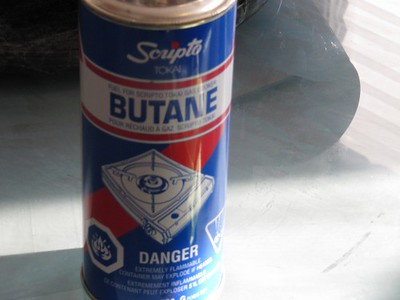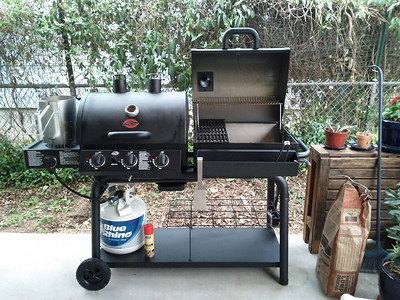
Butane is a highly flammable and volatile gas commonly used as fuel in lighters, torches, and portable stoves. While it provides a convenient source of energy, it is crucial to handle this fuel with care and adhere to proper safety guidelines.
One question that often arises is whether it is safe to shake a canister.
In this article, we will explore the implications of shaking the can and discuss the potential risks involved. Understanding the dangers associated with this practice is essential for ensuring the safe use of this gas and preventing accidents.
Let’s delve into the topic and shed light on whether you should shake butane or not.
To Answer This Question
Shaking butane is not recommended due to the high flammability and volatility of the gas. Shaking a container filled with butane can increase the risk of accidental ignition or explosion. It is crucial to handle the fuel carefully and follow the manufacturer’s safety guidelines. Shaking can lead to the release of pressurized gas, potentially causing leaks or other safety hazards. If you have concerns about using the fuel safely, consult the manufacturer’s recommendations or relevant safety guidelines.
Misconceptions Surrounding Shaking Butane Cans
There are a few common misconceptions surrounding the practice of shaking butane cans. Let’s explore these misconceptions to gain a better understanding of the topic.
Shaking increases the amount of fuel in the can:
One misconception is that shaking a butane can will increase the amount of fuel available for use. In reality, the amount of fuel in the can is determined by its volume, not by shaking. Shaking a can will not magically create more fuel.
Shaking improves the quality of the fuel:
Another misconception is that shaking the can improves the quality of the fuel or enhances its performance. While shaking may aid in better mixing the fuel and propellant, the quality of the fuel itself is determined by its composition and manufacturing process. Shaking alone does not alter the fuel’s properties.
Shaking eliminates impurities or contaminants:
Some people believe that shaking the can helps remove impurities or contaminants from the fuel. However, the fuel is typically manufactured and filtered to ensure a high level of purity before it is packaged. Shaking the can does not have a significant impact on the removal of impurities.
Shaking is necessary for a proper fuel-to-propellant ratio:
There is a misconception that shaking the can ensures the correct fuel-to-propellant ratio for optimal performance. In reality, the fuel and propellant are already adequately mixed in the can during the manufacturing process. Shaking the can may not significantly alter this ratio.
It’s important to dispel these misconceptions to avoid unnecessary risks and ensure the safe use of this gas. Following manufacturer guidelines and recommendations for handling and using this fuel is essential for maintaining safety and maximizing the performance of your butane-powered devices.
The Danger of Shaking Butane
Butane is a highly flammable and volatile gas, making it crucial to handle with caution. When it comes to shaking a can, there are potential risks that should not be overlooked. Let’s explore the dangers associated with this practice.
The flammability and volatility of the fuel:
Butane is known for its high flammability, which means it can easily ignite when exposed to a spark or flame. Additionally, it is a volatile gas, meaning it evaporates quickly and can form explosive mixtures with air. These properties make this gas potentially hazardous if mishandled.
Potential risks associated with shaking a can of butane:
- Increased risk of accidental ignition or explosion: Shaking a container filled with this fuel can create turbulent conditions that increase the likelihood of accidental ignition or even an explosion. The agitation of the gas inside the can may create sparks or increase the chance of contact with a flame, leading to dangerous consequences.
- Release of pressurized gas and potential leaks: the containers, such as cans or lighters, are designed to handle the gas safely when used as intended. Shaking the can vigorously causes the release of pressurized gas, potentially resulting in leaks. These leaks pose risks of fire, as well as exposure to highly flammable gas.
Following the manufacturer’s safety guidelines:
To ensure the safe use of butane, it is crucial to follow the manufacturer’s safety guidelines and instructions provided. Manufacturers design their products with specific usage instructions in mind, which may include recommendations on handling, storing, and refilling. Adhering to these guidelines helps minimize the risks associated with using butane and promotes safe practices.
Shaking a can pose potential dangers due to its flammability and volatility. The increased risk of accidental ignition or explosion, as well as the possibility of releasing pressurized gas and causing leaks, highlight the importance of avoiding this practice. It is vital to prioritize safety by following the manufacturer’s safety guidelines and instructions to mitigate risks when handling and using the fuel.
When Filling a Lighter, Don’t Shake Vigorously
When shaking the can, it is important to do so gently and avoid excessive agitation. It is recommended to shake the can for a brief period to ensure proper mixing but without creating turbulent conditions that could lead to safety risks. After shaking the can, you can proceed to refill the lighter according to the manufacturer’s instructions and guidelines.
By shaking the can before refilling, you can enhance the mixture’s quality and ensure a better fuel-to-propellant ratio, which can positively impact the lighter’s performance. However, it’s crucial to strike a balance and avoid excessive shaking or vigorous agitation, as this can potentially increase the risks associated with handling and using this fuel.
Recommendations and Safety Guidelines
To ensure the safe handling and use of butane, it is crucial to adhere to established safety guidelines and follow manufacturer recommendations. Let’s explore the industry recommendations and safety guidelines associated with handling the fuel.
Established safety guidelines for handling butane:
- Use in well-ventilated areas: It is important to use the fuel in well-ventilated spaces to minimize the risk of gas buildup.
- Avoid open flames and ignition sources: Keep the fuel away from open flames, sparks, or any other potential ignition sources.
- Store in cool, dry places: Butane should be stored in cool, dry areas away from direct sunlight, heat sources, or excessive moisture.
- Check for leaks: Before using the fuel, inspect the canister or container for any signs of damage or leaks. Do not use if leaks are detected.
- Proper disposal: Dispose of empty canisters in accordance with local regulations and guidelines.
Manufacturer recommendations for safe use and storage:
Manufacturers provide specific recommendations for the safe use and storage of their butane products. These may include:
- Proper refilling techniques: Follow the manufacturer’s instructions for refilling lighters or devices, including any recommended shaking procedures if applicable.
- Usage Limitations: Manufacturers may specify the intended use and limitations of their products. Ensure you use them only for their intended purpose.
- Storage instructions: Manufacturers often provide guidance on how to store their products safely, such as temperature ranges and precautions to prevent leaks or accidents.
- Safety precautions: Manufacturers may provide additional safety precautions specific to their products, such as avoiding prolonged exposure to heat or using them in specific environments.
C. Importance of seeking specific guidance from manufacturers or relevant authorities:
It is essential to seek specific guidance from the manufacturers of butane products or relevant authorities in your jurisdiction. Manufacturers have in-depth knowledge of their products and can provide precise instructions on handling, refilling, and storage. Additionally, local authorities or regulatory agencies may have specific guidelines or regulations regarding the handling and use of butane.
By following industry recommendations, and manufacturer guidelines, and seeking specific guidance, you can ensure that you handle this fuel safely and minimize the associated risks.
Remember, prioritizing safety and adhering to the recommended guidelines are fundamental to the responsible use of this fuel and other flammable substances.
In Conclusion
The question of whether you should shake butane before using it or refilling your lighter has been explored. While there is some debate surrounding this topic, it is important to prioritize safety and follow the recommended guidelines.
Shaking a can of this fuel can potentially impact the fuel-to-propellant ratio and enhance the performance of the lighter. The agitation helps to create a well-mixed refill, resulting in a more consistent flame and better ignition capabilities. However, it is crucial to strike a balance and avoid excessive shaking that could lead to safety risks.
To ensure the safe handling and use of the fuel, it is essential to follow established safety guidelines and manufacturer recommendations. This includes proper storage, avoiding open flames or ignition sources, and checking for leaks before use. Seeking specific guidance from manufacturers or relevant authorities is also important, as they can provide precise instructions tailored to their products.
Ultimately, your safety is paramount. By following the recommended guidelines and manufacturer instructions, you can minimize the risks associated with handling this fuel and ensure a safe and enjoyable experience.
So, should you shake butane? While it can have potential benefits, it is recommended to follow the manufacturer’s guidelines and consider the specific design of your lighter. By doing so, you can make an informed decision and prioritize safety in your use of butane.

Mike is an experienced propane technician with over 15 years of professional experience in the field. He has dedicated his career to helping customers with their propane needs, from installation to maintenance and repair. Together with Jeremy, he co-founded this website to provide useful information and guidance to customers seeking reliable propane services.




